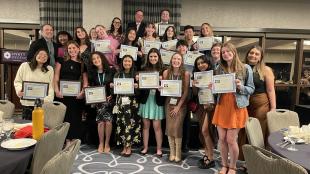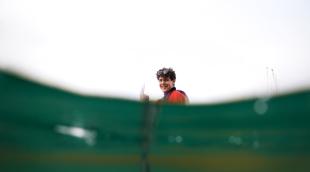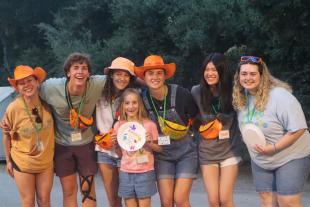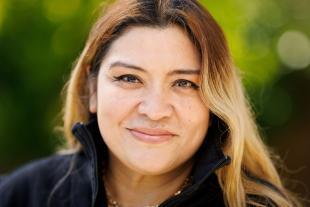Congrats, Class of 2024! Meet Six of This Year's Outstanding Grads
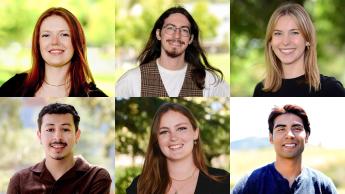
Meet six outstanding members of Cal Poly’s Class of 2024, representing a graduating class of more than 6,700. Tested by tragedy or inspired by travels, some pursuing lifelong interests and others finding their passions on campus, these Great Grads will leave as new alumni after June 15-16 commencement festivities at Alex G. Spanos Stadium, ready to embrace futures as vast as the cosmos or as concrete as teaching younger generations — and all now prepared to make a difference in the world.
Bella White
College of Engineering
Bella White has high hopes for big data — and she hopes to make a difference through research and data-based projects that can also make the world safer.
“I’m particularly passionate about using technology to combat human trafficking and promoting responsible and safe AI practices,” said the computer sciences graduate student. “I’d like to continue my work disrupting trafficking networks with data analysis and AI, creating tools to prevent and detect malicious use of Generative AI.”
The Tukwila, Washington, resident worked with three statistics students in Cal Poly’s Cross-Disciplinary Studies Minor in Data Science program for over six months to build a powerful new network to uncover connections between co-conspirators and identified Colorado massage businesses engaged in a modern form of slavery. The group also worked with the Global Emancipation Network, or GEN, a nonprofit dedicated to disrupting human trafficking.
Through the data science program’s existing partnership with GEN, “I got the chance to apply what I learned in the CDSM Data Science minor to disrupt human trafficking networks behind illicit massage businesses that provide illegal sexual services, usually through sex trafficking,” she said.
“We created a network of connected businesses using publicly available business license data to uncover potential criminal organizations involved in Colorado’s illicit massage industry. The network currently supports law enforcement investigations into organized criminal activities involving individuals and businesses in the United Kingdom, Colorado and California. I am incredibly proud of my team’s work, and I was so lucky to work with them on a project like this.”
The work is also the linchpin of her graduate studies.
“My (master’s) thesis aims to support ethical AI initiatives by detecting the use of generative AI in cybercrime,” she said. “I strongly believe that it is my responsibility as a data scientist to use my skills to make the world a better, safer place, even if it is uncomfortable to do so. I’ve had amazing opportunities to work with and learn from nonprofit groups, industry researchers and members of the global policing community to support initiatives combating the use of AI in cybercrime.
As a freshman in fall 2019, White was excited to be part of a research team that involved academic and industry partners — connections she said she still works with five years later.
With the COVID-19 pandemic, she struggled when the campus shifted to virtual lessons. As it wore on, she feared her chances for a rewarding college experience were gone. Juggling classes with internships, personal projects, research and maintaining a social life left her feeling overwhelmed and anxious. The key, she realized, was to prioritize mental health and to always ask for help early and often.
“I’m now on the eve of my graduation with exciting contributions on multiple research projects, one of which has been accepted to a conference, a thesis I’m extremely proud of, and surrounded by friends and close colleagues,” White said. “Outside of academics, I found my love for the outdoors after many rock-climbing, surfing and SCUBA diving adventures.
“Choosing Cal Poly turned out to be the best decision I ever made,” she said. “I’ve really thrived in the Cal Poly learning environment, and I believe I wouldn’t have gotten this experience anywhere else.
“Getting to this point was definitely hard, but I am proud of my time at Cal Poly and who I’ve become.”
Nick Androski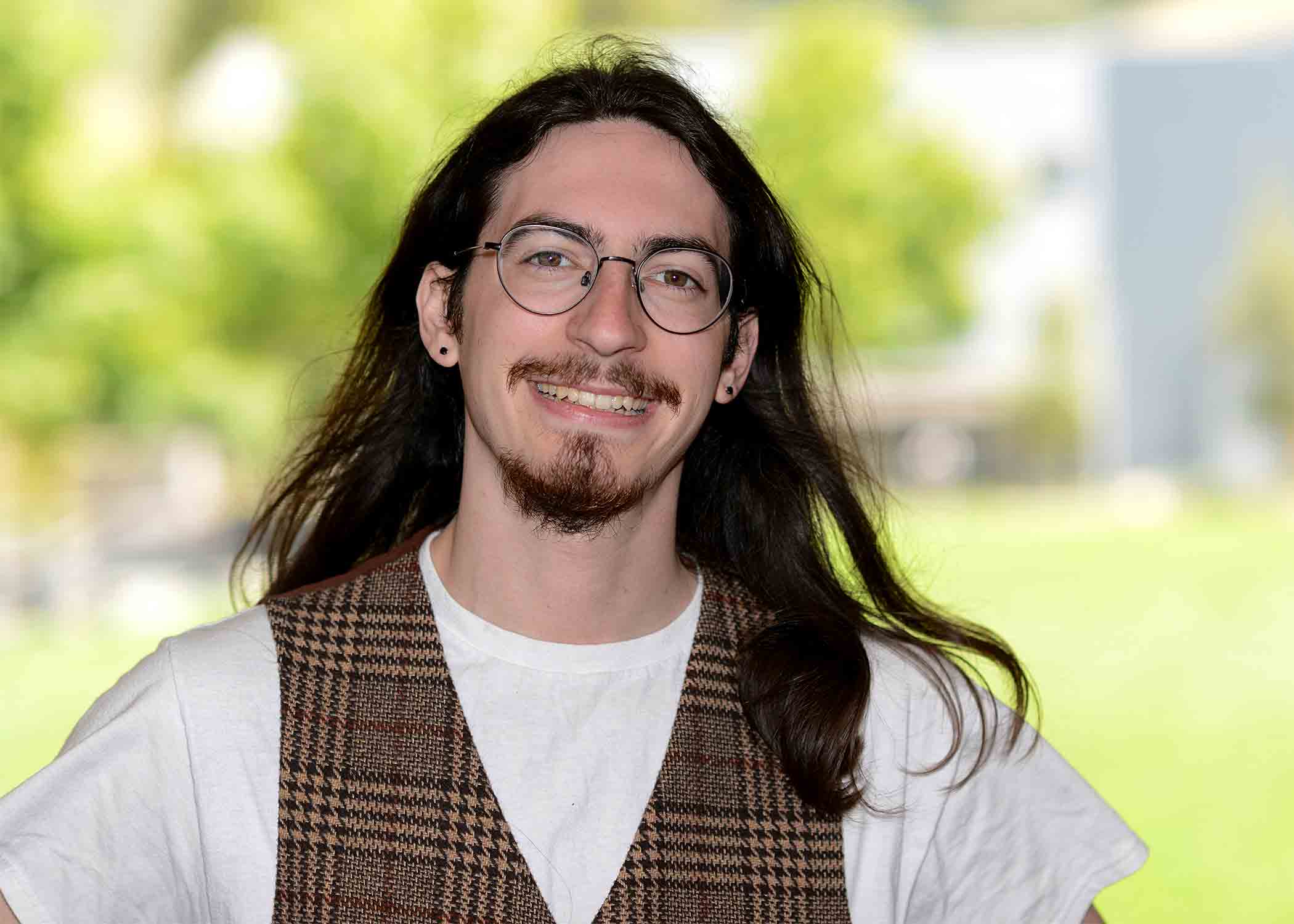
Bailey College of Science and Mathematics
Physics student Nick Androski wasn’t trying to impress his professors over the past four years with straight As. He just planned to join them.
“Ultimately, my goal is to become a professor of physics, somewhere similar to Cal Poly that is focused on undergraduate teaching and mentoring,” the 22-year-old said. “I want to be a professor to teach first and foremost.”
It’ll be a chance to share his passion for the subject that he had only a vague, pop-culture sense about when he arrived at Cal Poly. Today, he knows physics is a vast field — and that he has miles to go before he sleeps.
“I’ve just committed to the University of Michigan (in Ann Arbor) Climate and Space Sciences and Engineering (CLASP) Ph.D. program that starts this fall,” he said. “I will be working on modernizing climate models and tackling climate science, a new field for me.”
While the Chula Vista, California, resident hasn’t yet decided to the exact area of physics he will ultimately pursue, he said: “My current research interests lie in the study of stars from their evolution to the complex plasma physics that govern energy exchange within their atmospheres.”
His undergraduate experience was heavy on research. Androski was a summer intern for a National Science Foundation Research Experiences for Undergraduates site at the Center of Astrophysics — a collaboration between Harvard College Observatory and the Smithsonian Astrophysical Observatory, a half-century partnership designed to address humanity’s greatest unresolved questions about the nature of the universe. The 10-week assignment helps equip students with the skills necessary for a successful scientific career.
Several physics faculty have been mentors. Jennifer Klay, the Physics Department chair he worked with as a part of the Neutron-Induced Fission Fragment Tracking Experiment, “inspired me to constantly challenge myself and become a student leader,” he said. Professor Tom Gutierrez, whose research interests include neutrinoless double-beta decay and nuclear particle physics, taught him to embrace his “inner nerd.” Assistant Professor Laura Ríos, active in physics and astronomy education research, taught him what it means to lead: through sincere action. And Assistant Professor Elizabeth Jeffery, who he assisted on two projects, “has served as an inspiration to continue my lifelong curiosity of space by introducing me to the world of astronomers.”
He was thankful for her help getting him to the 243rd meeting of the American Astronomical Society in New Orleans last January, where he presented on the open cluster NGC 6253, a project to constrain the age of the cluster by observing the stars that have nearly exhausted their hydrogen fuel. The results will aid in future observations of the distant stellar body’s dimming white dwarfs, once the size of the sun, that have used up their power source.
“Cal Poly helped show me what it means to be a physicist and prepared me for how I could use my degree,” he added. “By sharing my passion for science with people that had similar interests, I found my passion for teaching. Cal Poly helped me to get into graduate school and will help me get closer to my goal of becoming a professor.”
He was also shaped by the community he helped foster during the past two years through efforts with the Society of Physics Students, adding: “I will most remember the people. Through them I shared my joy for physics and space. Through them I have seen a glimpse of the diversity of permutations of living as a human being, each with their own perspective. Through them I found community and belonging. Through them I’ve found myself. Those memories and relationships I will take with me for the rest of my life.”
Isaac Lopez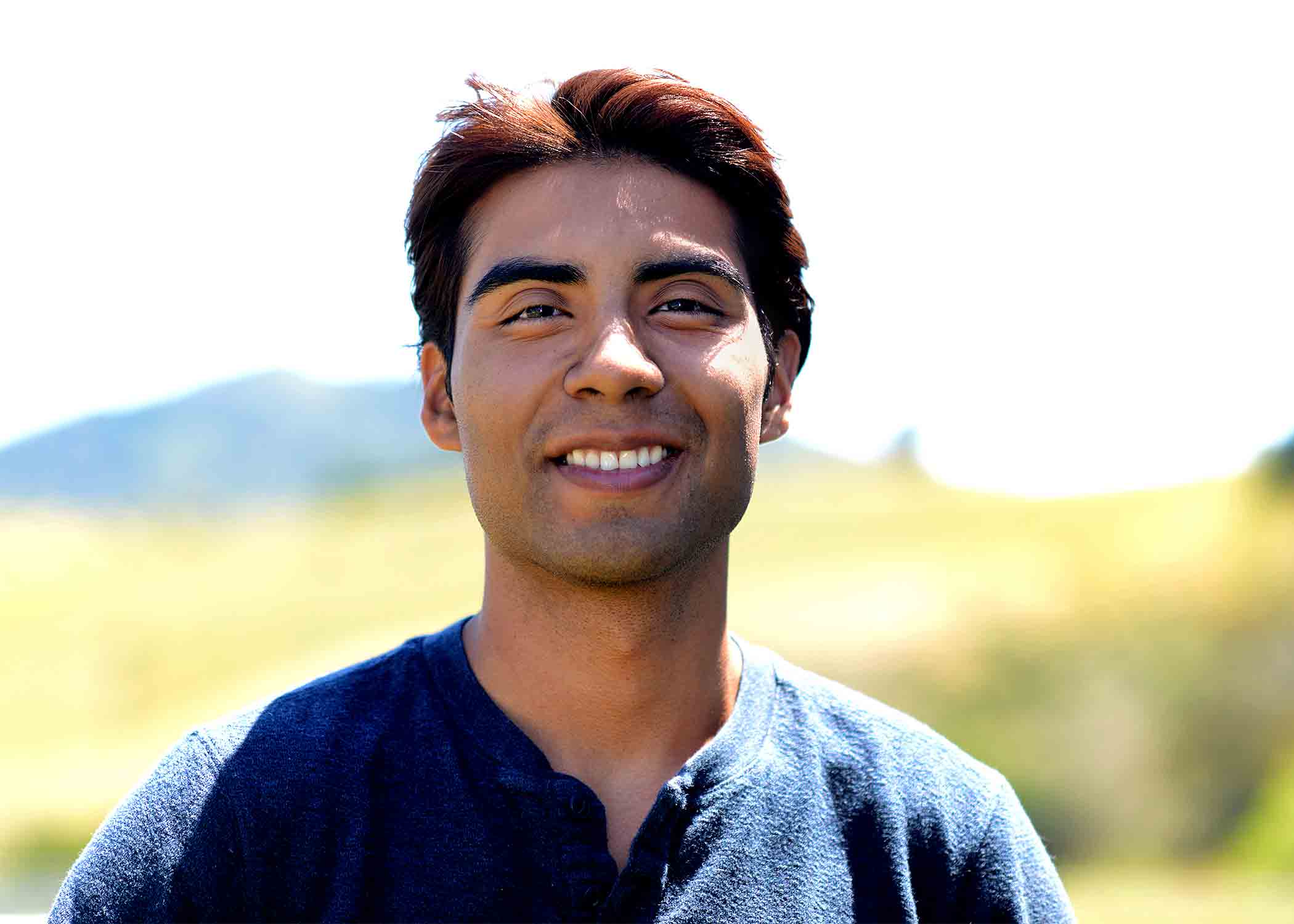
College of Agriculture, Food and Environmental Sciences
Isaac Lopez remembers visiting Cal Poly as a K-12 student from Shandon, a rural town of about 1,200 in northeastern San Luis Obispo County.
“I always thought Cal Poly was a place that I saw myself,” he said. “As a high school sophomore, I attended a conference titled ‘26 Hours in Science and Technology in Agriculture.’ The student organizers from the Latinos In Agriculture club impacted me and pushed Cal Poly to the top of my choices. I knew I’d get to immerse myself in agriculture and have a community here to support me through higher education.”
The agricultural science student and future educator was one of the leaders of 2023’s 26 Hours showcase of agricultural innovation, which attracted students from 15 California high schools.
Lopez, who was valedictorian of Shandon High School, continued his academic success at Cal Poly and was named 10 times to the Dean’s List, with a near-4.0 grade point average.
“My career interests include agriculture education, leadership and production agriculture,” he said.
At Cal Poly, plunged into a variety of activities and extracurricular opportunities developing leadership skills along the way. He organized four college conferences and served as the college’s student government representative, while pursuing several internships from San Luis Obispo to Washington, D.C.
He also worked at City Farm SLO, a not-for-profit 19-acre urban farm that has taught regenerative farming practices to over 3,000 residents and held a youth education program that served 33 county students in 2023. Last summer as the farm’s Youth Empowerment Program facilitator, Lopez helped the ninth- to 12th-graders develop leadership and work skills..
“It was a privilege supporting students through eight career-and college-readiness sessions and learning about their passions,” he said.
He took great pride working with even younger kids as part of the California Wheat Commission’s Wheat2School program. As its student coordinator, he worked at four schools in Shandon and San Miguel, in San Luis Obispo County, to provide K-8 pupils with whole-grain foods education.
“This is the first farm-to-school program to help schools include hands-on learning experiences of growing wheat on-site, harvesting and milling,” he said. “This was a true test of Learn by Doing to create curriculum, help maintain the wheat plots and visit the schools to lead ag lessons.
“Many times, the teachers would start my visit with, ‘We have a student from Cal Poly visiting today.’ It felt rewarding to represent the university and pour my passion for learning into the students.”
Financing his higher education looked to be a challenge — but as a high school junior, he received the inaugural $20,000 James W. Brabeck Youth Legacy Scholarship in 2019, which was split over four years. Then, just months before starting his first-year classes, he received Community Foundation awards worth $4,500.
“I was fortunate to be a part of the Cal Poly Scholars program,” Lopez said. “I worked part time during my undergraduate studies. Having understanding, flexible bosses helped me balance work, studies and extracurriculars. I defeated the financial challenges through the support of my community.”
He has more schoolwork ahead before he can begin his career teaching agriculture. This fall, he’ll return to Cal Poly for a master’s program in agricultural education while completing the coursework for a single-subject teaching credential.
Lopez is grateful for every time he made a commitment to a new endeavor. By joining the Latinos in Agriculture club, he grew as a leader and helped him find a community on campus. Serving in student government opened his eyes to the possibilities of making a difference for classmates and San Luis Obispo residents. And as a participant in the Leadership and American Presidency program, he learned the value of networking and connections, as well as an appreciation for differing experiences.
“At Cal Poly, I realized that by saying ‘yes’ to opportunities,” he said. “You open so many more avenues to learn, grow and impact others.”
Hannah Scoggins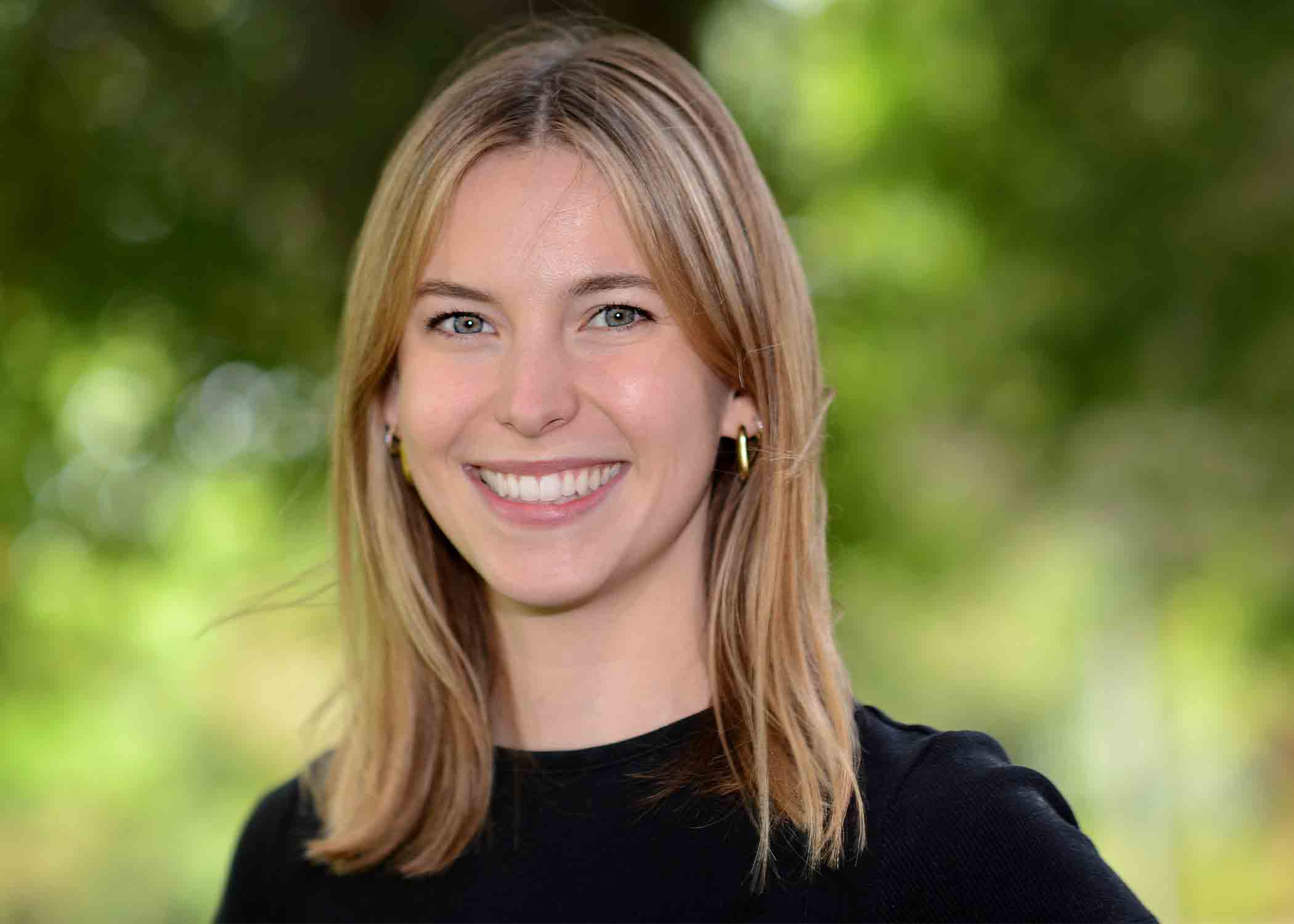
College of Architecture and Environmental Design
Hannah Scoggins has dreamed of becoming an architect ever since she learned about the profession as a young girl.
“I’m so passionate about architecture,” she said, “because I believe it is the type of design that impacts our health and well-being the most. Since the average American spends up to 90 percent of their time indoors, I think we should be living in and spending our time in spaces that are beautiful and conducive to positive health and well-being.”
She has spent her final year at Cal Poly working on her fifth-year thesis, [de]stress.
The seed of her journey was planted in a series of family moves: Philadelphia to Columbus, Ohio, then to Oakland and next Frankfurt, Germany, and finally Piedmont, in the Bay Area (with a brief stint in Chicago during COVID). Scoggins paid a lot of attention to buildings whenever she moved and developed a love for travel because of it.
In high school she founded an architecture and design club and participated in EmbARC, a summer design academy at UC Berkeley, where she worked on a design-build project and took studio and planning classes for a taste of what studying architecture might be like.
Before starting college, Scoggins took a gap year. She spent the first half in Sydney, Australia, where she interned at an architecture firm part-time and applied to colleges. She then traveled to Japan, Germany and England and spent the final months in Africa as a Habitat for Humanity volunteer building a house in Ndola, Zambia.
She ventured to Cal Poly in 2019 to begin the next phase of her architectural quest.
“I had learned about the school after moving to California from Germany while researching the top-rated, five-year architecture programs in the nation — only to find that one of them was quite close by,” the 23-year-old said. “After visiting and learning about the school’s Learn by Doing philosophy and studio culture, I knew it was where I wanted to study.”
Ready as a freshman for the mountain of work that lay ahead, she was blindsided when her Week of Welcome group leader tragically died at age 19 just months into the quarter.
“This loss made me realize just how fleeting life can be,” she said. “Life is too short to be spent doing anything other than what we love surrounded by the people we love, and to hold onto it while we still have the chance.”
Scoggins dove into her studies.
“The Learn by Doing education taught me to be unapologetically myself,” Scoggins said. “In a degree where uniqueness is seen as one’s strength, I have learned that no two people think in the same way — and that can be beautiful when fostered by the right environment.”
She spent the 2022-23 academic year in Florence, Italy, on a study abroad program that inspired her to add an Italian studies minor to her degree.
When she returned to campus for her final year, she participated in the 20th annual Vellum Furniture Design Competition. Her entry won the Milano Grand Prize as top pick of the nearly 200 entries. Her chair, “[De]Stress” — an offshoot of her thesis — featured a piece of painted bent steel tubing with a thick felt sling as the chair seat. The prize included a trip to the Salone Internazionale Del Mobile, the world’s largest trade fair, showcasing the latest furniture and design, so this spring she briefly returned to Italy.
During the five-year architecture program Scoggins made the Dean’s List 13 times, co-directed AIAS Freedom by Design, the community service branch of the American Institute of Architecture Students and completed internships at two San Francisco architectural firms.
In August she’ll begin her career at a San Francisco architecture firm, and over the next few years she’ll take her architectural registration exams for licensure. But, like the middle schooler who started this trek, she has an ambitious end game.
“Later, I hope to return to school to pursue an MBA to fuel my entrepreneurial dreams of starting my own firm,” Scoggins said.
Cristian Reyes 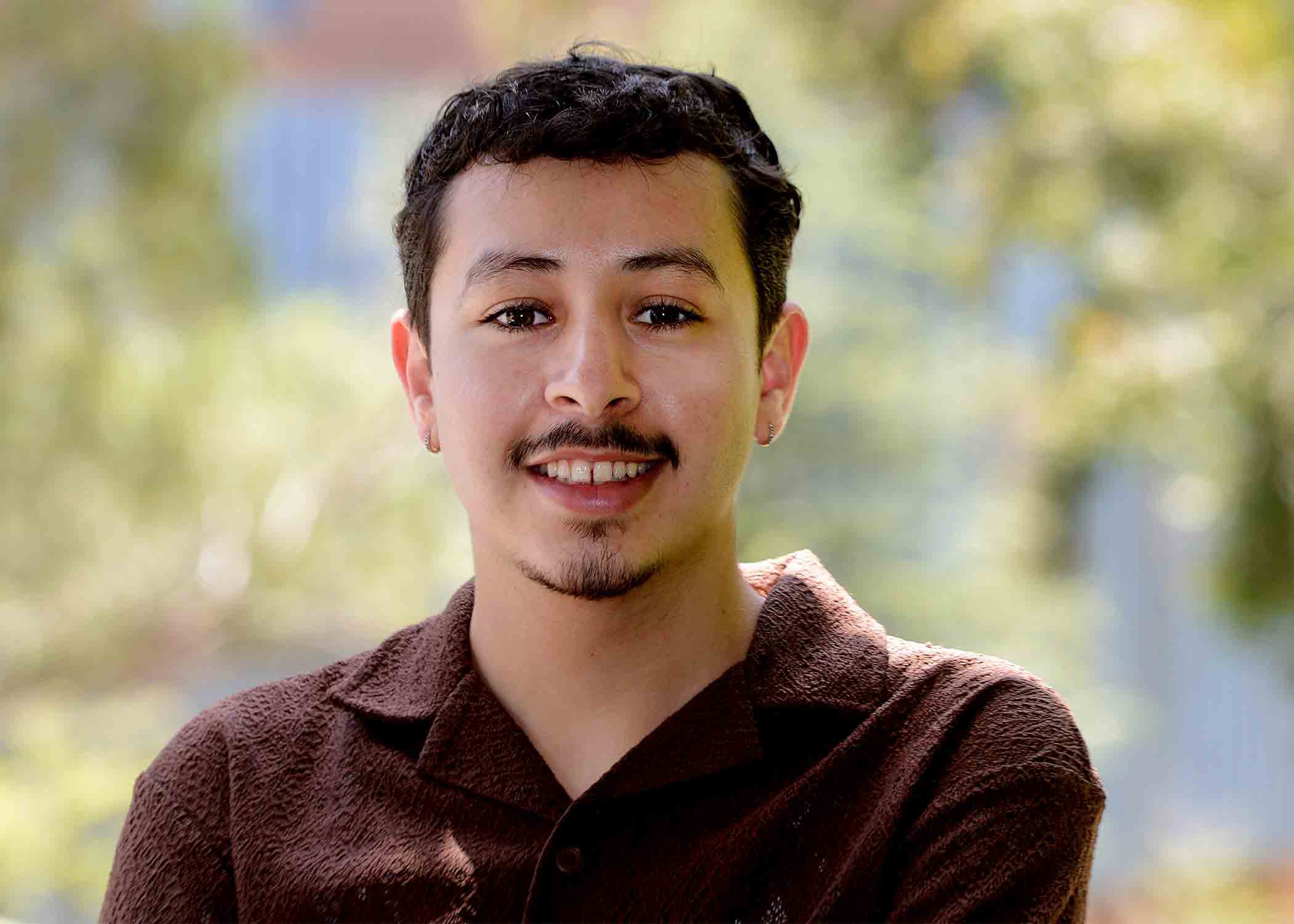
College of Liberal Arts
Christian Reyes arrived at Cal Poly in the fall of 2020 as a “naive and eager” biology student. Four years later the child development major is poised to graduate with plans this fall to pursue a master’s degree.
“My career goal is to work in higher education where I can utilize advocacy to leverage policy to make higher education more accessible and equitable for underrepresented students,” he said.
He changed his field of study to child development near the start of his sophomore year. Reyes’ grades soon surged, and the McFarland, California, resident made the Dean’s List the following quarter. He’s been honored another five times for receiving at least a 3.5 grade point average on a full-time load of classes.
Cal Poly was an easy choice. He liked its location (“beautiful and the weather is great!”) and the hands-on learning ethos.
“Learn by Doing has profoundly impacted my academic journey and shaped my future goals in meaningful ways,” the 22-year-old said. “This experiential learning model has enhanced my academic understanding and has instilled in me a deep sense of confidence and preparedness as I navigate the professional world. Ultimately, Learn by Doing has inspired me to pursue a career focused on making a tangible impact, where I can continue to apply and expand upon the practical skills and knowledge gained during my time at Cal Poly.”
Like many first-generation students, Reyes struggled in a university setting and a campus population larger than his hometown, but he found his footing through student organizations and advocacy groups that gave focus to his future ambitions.
He found crucial support and a sense of belonging from the college diversity committee, student government, his Latin fraternity Lambda Theta Phi and Cal Poly Scholars, which provides financial, academic and community resources to high-achieving Californians from low-income backgrounds.
He was also buoyed by advocacy experiences that proved motivating and “strengthened my resilience and fueled my commitment to fostering a more-inclusive campus environment for future generations,” said this year’s student recipient of the President’s Diversity Award that honored his commitment to improve equity, and inclusion on campus.
Reyes is also proud of his selection for several state and national fellowships that made a difference for the budding advocate, changemaker and diversity professional.
A summer internship at the Latino Student Fund last year took him to Washington, D.C., where he was assigned to help an organization improve educational access to underrepresented communities living in the district. A month later, he was named to a yearlong fellowship with Today’s Students Coalition, part of the group’s second cohort of outstanding student-leaders looking to deepen their knowledge of federal education policy and create sustainable change after returning to their communities.
“The fellowships allowed me to engage in impactful research, advocacy and community service projects, further honing my skills,” he said. “That summer in Washington, D.C., exposed me to diverse perspectives and experiences, broadening my understanding of public policy and civic engagement and paved the way for future opportunities and endeavors.”
Reyes travels hopeful aided by supportive friendships with peers and faculty and staff mentors.
“Whether collaborating on projects, navigating challenges or simply sharing moments of joy and camaraderie, the bonds formed within the Cal Poly community have left a lasting impression on me,” he said. “They have taught me the importance of building meaningful connections and supporting one another in our journey towards personal and professional fulfillment.”
Macey Hardridge 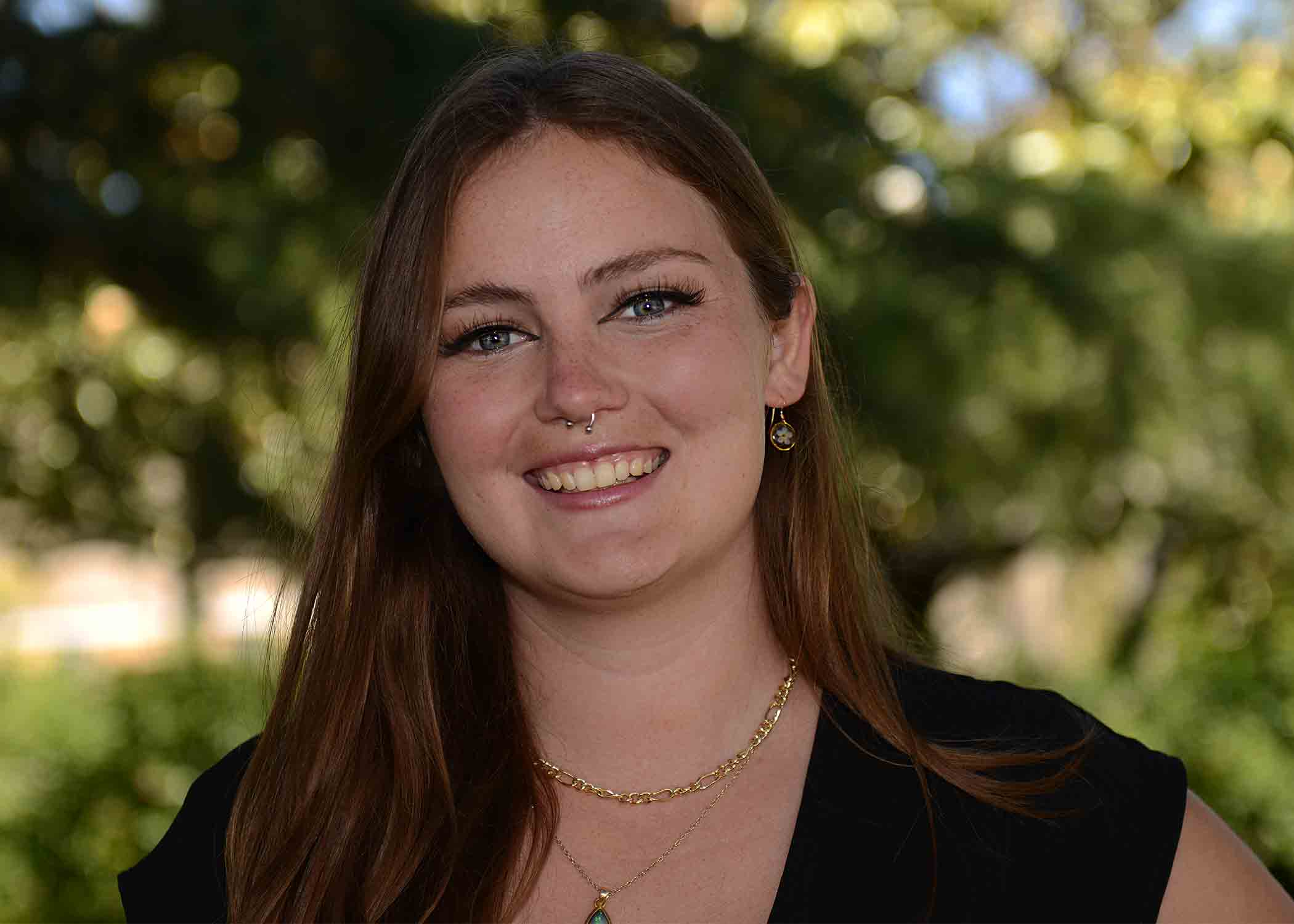
Orfalea College of Business
Macey Hardridge is a lucky lady, but it was the community-college transfer student’s determination and hard work to overcome challenges that led her to earn a bachelor’s degree with honors in business administration.
“When I first came to campus I was really in my shell,” the 24-year-old said. “I was really nervous to talk to people, and I felt intimidated by all the exams that were to come. Overall, I felt out of place and not smart enough to be here.”
Originally from Blythe, California, the Arroyo Grande resident transferred from nearby Cuesta College, where she studied psychology 2019-22. Hardridge adjusted and thrived in Cal Poly’s faster-paced quarter system, receiving top grades while typically taking a course load of 16-17 units. In her final two quarters, she quickened the pace by taking 20 units last fall and 24 units in the first quarter of this year, garnering near straight-A grades and being named to the Dean’s List for both terms.
“Now, on the eve of leaving with my degree, I feel exceptionally capable,” she said. “I feel confident in my ability to achieve whatever it is I set my mind to, and I have become way more social. I’ve made great friends and look at challenges with excitement rather than fear and overwhelm.”
Three months after graduating from Palo Verde Valley High School in Blythe, her quest for a college education almost ended before it started.
"On Sept. 19, 2017, I was the passenger in a car crash and due to the severity, when I arrived at the emergency room the admitting staff gave me the identifying name of ‘Lucky Lucky’ ” she said.
Following that accident in Arkansas, she turned to creating art and by March 2020 launched Lucky Lucky Studios. The jewelry business, which includes her creations of necklaces, rings, bracelets and earrings, turned a profit its first year.
“I didn’t really start with the business major, funny enough,” she said. “I was getting my psychology degree at Cuesta College and actually started my business while I was there. And suddenly I realized, ‘Wow! I love this. I love business. I love creating things and finding ways that they can be marketable.’ ”
It began as an e-commerce venture, but four years later she also sells her wares in brick-and-mortar shops, at area farmers markets and at an artisan goods store in downtown Morro Bay. There she met the store owner’s husband, Tim Ridout, who is also an accounting lecturer in the Orfalea College of Business and a fan of her business.
“What really stands out to me is that Macey is living Learn by Doing,” Ridout said. “She procures, manufactures, markets and sells all her own products. She has to try, fail and iterate. She has to organize her time to be a successful student and manage a whole business. While she’s taking classes, she has the real world to compare and contrast against the teachings.”
Hardridge, whose concentration was marketing, is also busy with other endeavors. Since February, she’s been using her marketing acumen to help other entrepreneurs as event coordinator of the Art in the Park Shell Beach monthly market.
Like all graduates, she is thankful for her supporters.
"A special thanks to my partner, Travis, for showing me the value of higher education and helping me gain the confidence and perspective to initially apply to Cal Poly,” she said. “He was there every time I was overwhelmed with my exams and my appreciation is endless.
“I have loved every part of attending Cal Poly,” she said, “everything from the faculty and the friends made to the projects I’ve completed in my courses. Every one of these areas have helped me challenge myself and grow as a person. I’m so incredibly thankful to everyone in my life who helped me achieve this.”
Want more Learn by Doing stories in your life? Sign up for our monthly newsletter, the Cal Poly News Recap!

